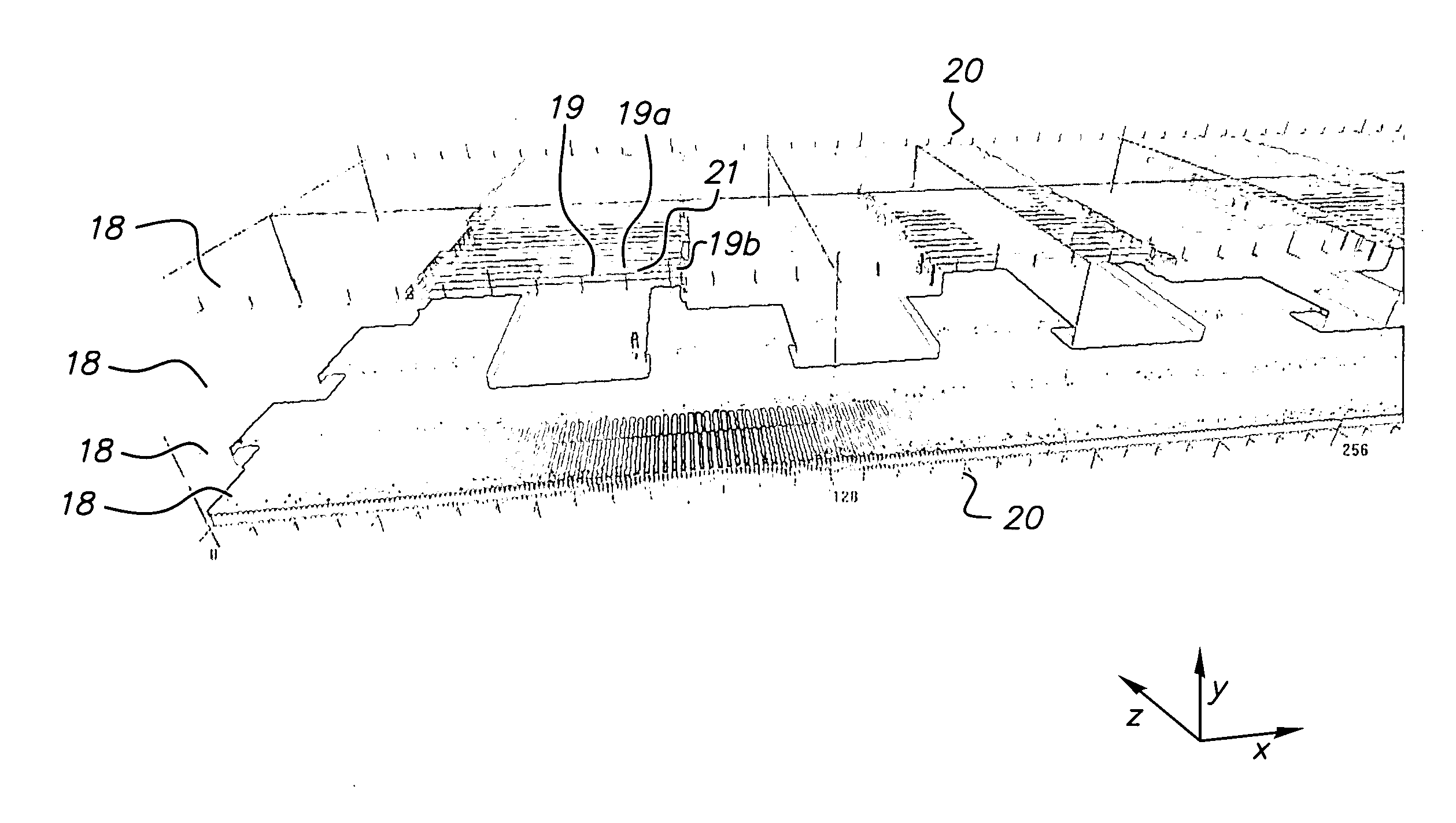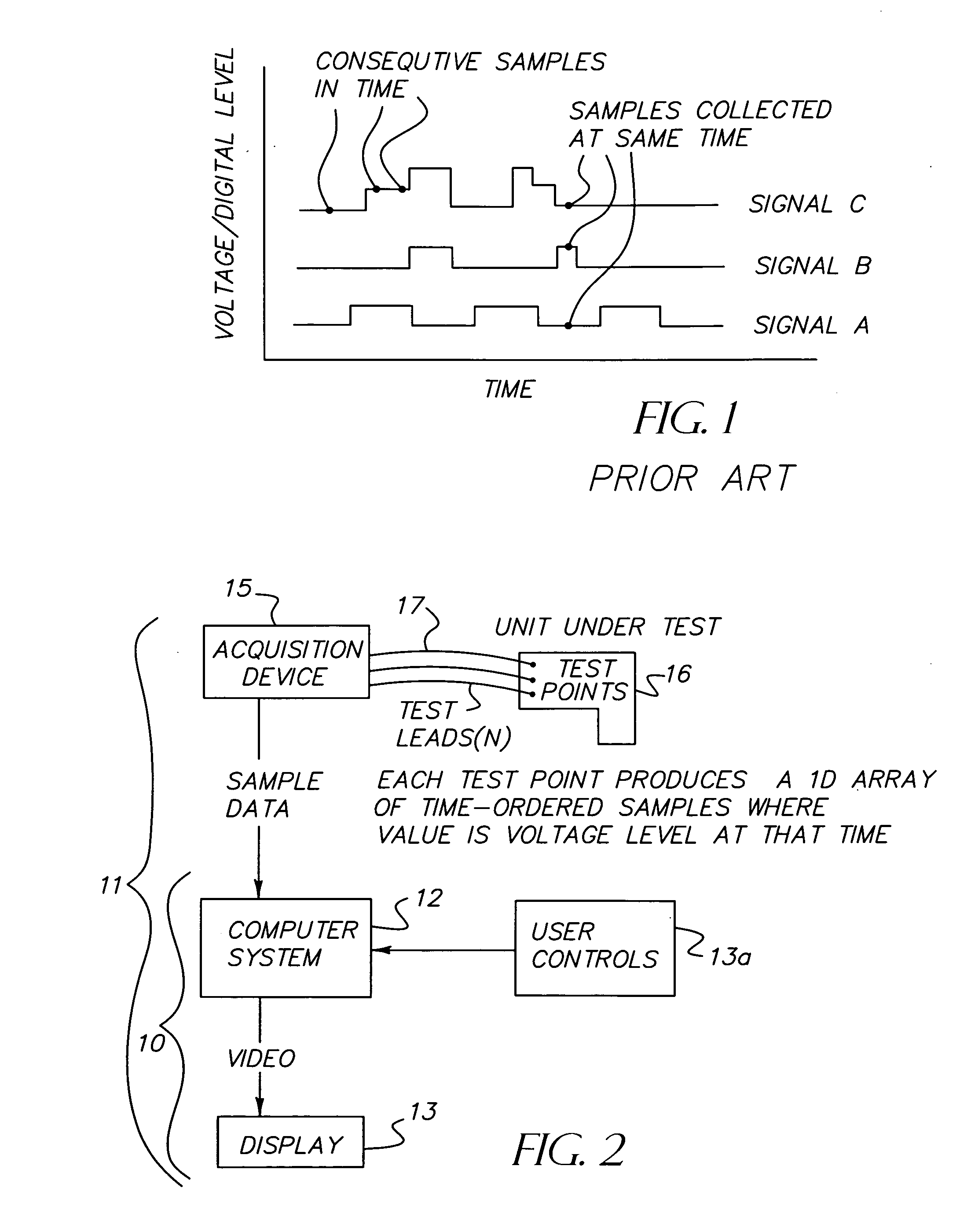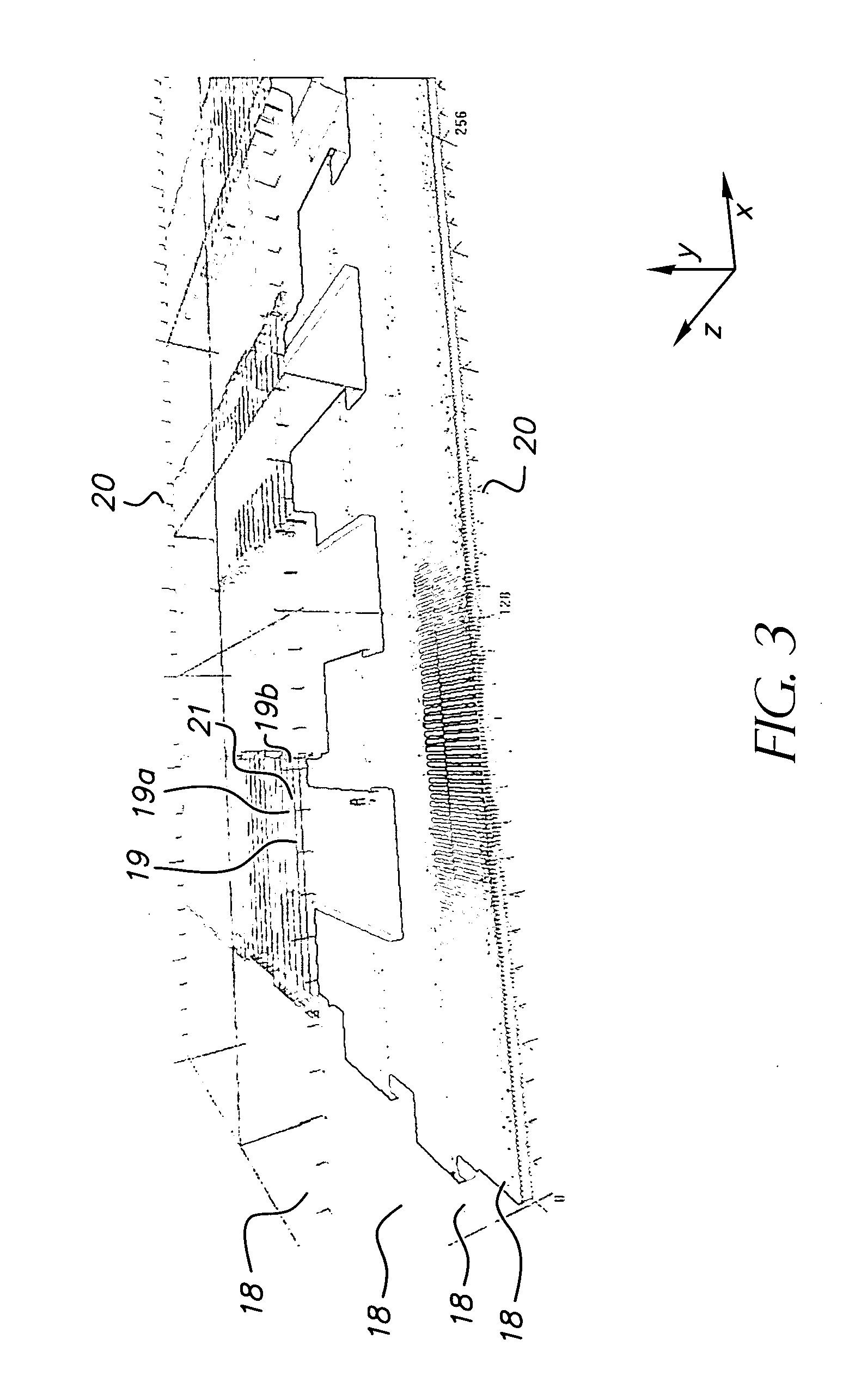System for three-dimensional rendering of electrical test and measurement signals
a three-dimensional rendering and test signal technology, applied in the field of three-dimensional rendering of test and measurement signals, can solve the problems of large amount of data, difficult for users to visualize and identify data of interest at a particular channel, and difficult to discern the variations of repetitive waveforms over tim
- Summary
- Abstract
- Description
- Claims
- Application Information
AI Technical Summary
Benefits of technology
Problems solved by technology
Method used
Image
Examples
Embodiment Construction
[0054]Referring to FIG. 2, the system 10 of the present invention has a computer system 12 with software in accordance with the present invention for rendering on a display 13 coupled to the computer system. The computer system 12 is connected to an acquisition device 15, such as a LeCroy Model No. MS-250 or MS-500 Mixed Signal Oscilloscope, or other logic analyzer or digital oscilloscope, receiving electrical signals from a device (or unit) 16 under test via test leads 17. For purposes of example, three leads 17 are shown for providing three electrical signals, but other number of leads may be used depending on the acquisition device 15. The acquisition device outputs digital data to the computer system 12 representing multiple channels of electrical signals received from leads 17, where each channel represents a signal from one of the leads 17 having amplitude or value over time. The analog electrical signals are converted by the acquisition device 15 into digital data format. The...
PUM
 Login to View More
Login to View More Abstract
Description
Claims
Application Information
 Login to View More
Login to View More - Generate Ideas
- Intellectual Property
- Life Sciences
- Materials
- Tech Scout
- Unparalleled Data Quality
- Higher Quality Content
- 60% Fewer Hallucinations
Browse by: Latest US Patents, China's latest patents, Technical Efficacy Thesaurus, Application Domain, Technology Topic, Popular Technical Reports.
© 2025 PatSnap. All rights reserved.Legal|Privacy policy|Modern Slavery Act Transparency Statement|Sitemap|About US| Contact US: help@patsnap.com



